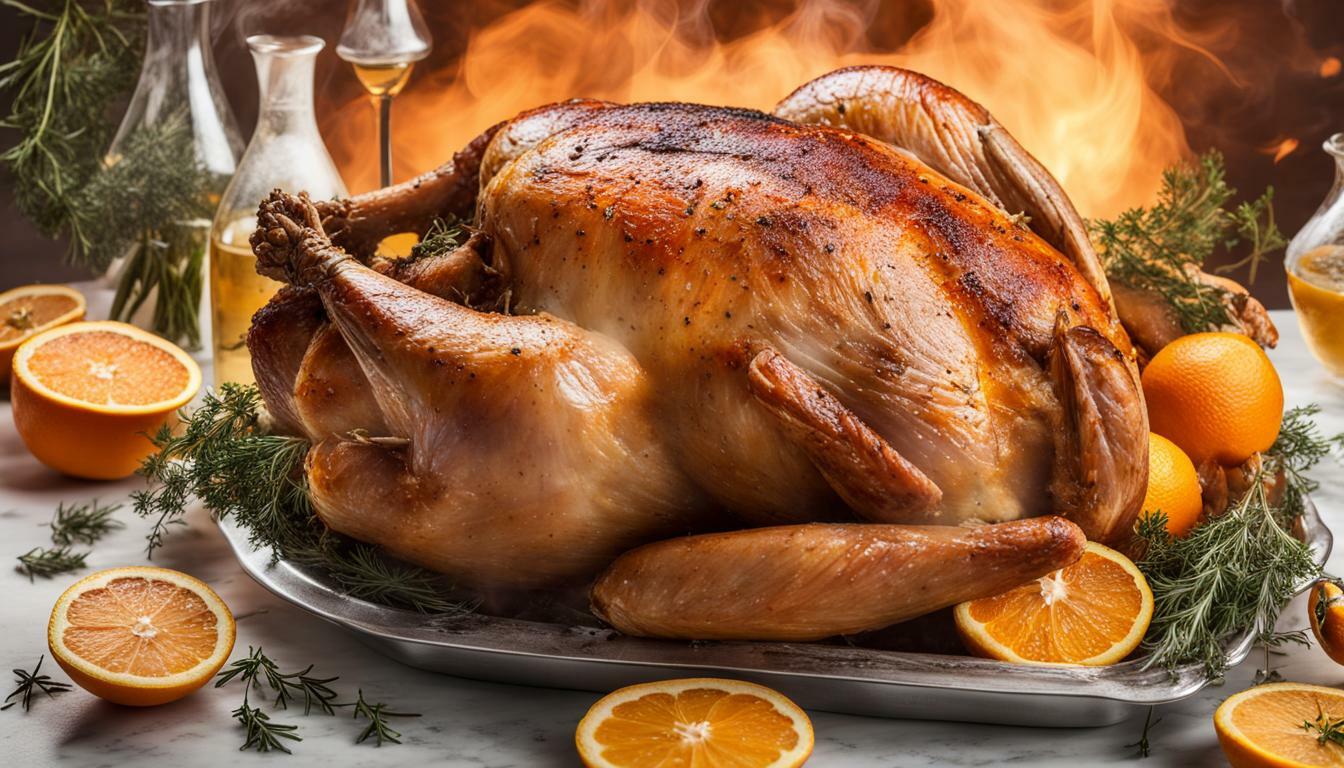As Thanksgiving and the holidays approach, home cooks everywhere are focused on one thing – cooking the perfect turkey. We all want a bird with crispy skin wrapped around moist, flavorful meat. While roasting a turkey seems straightforward, it can be tricky to get ideal results. The breast meat dries out easily, while the dark meat stays underdone. This leaves you with an unevenly cooked bird.
To help combat this issue many cooks turn to brining or injecting their turkeys. These techniques hydrate the meat so it stays juicy and allow you to infuse flavor. But which one should you choose – brining or injecting? Let’s explore the pros and cons of each method.
Brining Basics
Brining involves submerging your raw turkey in a saltwater solution for hours or days before cooking. The salt causes the meat’s muscle fibers to soak up the liquid, keeping it juicy as it roasts. Brining typically requires:
- A large container big enough to fully submerge the turkey
- Brine made from salt, water, and optional flavorings like herbs and spices
- 12-24 hours of brining time in the refrigerator
Pros
- Very effective at keeping turkey meat moist
- Infuses flavor throughout the meat
- Tenderizes the meat
Cons
- Takes significant space in your refrigerator
- Can make the skin soggy and prevent crisping
- Adds extra sodium if not thoroughly rinsed after brining
Brining does an excellent job hydrating the entire turkey to prevent dryness. But the liquid alone may not be enough to sufficiently cook the innermost parts of a large bird.
Injecting for Targeted Results
Injecting uses a marinade syringe to deliver liquid and flavor directly into the turkey meat. With injecting you can:
- Inject right before cooking or up to 24 hours ahead
- Target undercooked areas like the breasts and deep leg muscles
- Use flavorful liquids like broth, melted butter, or oil-based marinades
Pros
- Injects moisture and flavor where you want it
- Works quickly – can be done right before roasting
- Allows basting liquids other than plain saltwater
Cons
- Can be messy due to liquid squirting back out
- Does not hydrate the meat evenly like brining
- Needs to be carefully monitored when cooking to prevent over-doneness
Combining the Two Techniques
Some cooks use both brining and injecting to get the most out of their turkey. You can brine the bird to evenly hydrate the meat, then inject with flavored butter or broth right before roasting. This gives you the benefits of brining along with the targeted moisture and flavor of injecting.
If combining methods, reduce or eliminate salt in the injected liquid to control overall sodium levels. And take care not to overcook the turkey, since moisture levels will be very high.
My Go-To Technique
After years of testing turkey methods, I find injecting right before cooking delivers the best, juiciest results. I use a turkey injector syringe to deliver melted butter mixed with chicken or turkey broth deep into the breast and thighs.
The savory broth provides extra flavor, while the butter bastes the meat from the inside out. I make sure to get liquid into every piece of white and dark meat. The juices start basting immediately upon hitting the hot oven air.
I also carefully monitor the temperature and tent the breast with foil if it is cooking faster than the legs and thighs. This prevents it from drying out too quickly.
Expert Tips for Injecting Turkey
If injecting your turkey sounds appealing, follow these tips for success:
-
Choose broth and melted butter for the injection liquid. Infuse herbs right in the melted butter. Or use liquid leftovers from a pot of turkey soup or stock for extra flavor.
-
Inject liquid into the thickest parts of the breast, thighs, and drumsticks using a meat injector needle. Angle it to penetrate deep into each area.
-
Inject slowly while moving the needle around to spread the liquid out and prevent backflow squirting.
-
Let the bird rest for up to 24 hours in the fridge after injecting to evenly marinate.
-
Roast your turkey low and slow at about 325°F to prevent burning or drying out.
-
Tent foil over the breast bone if it browns more quickly than the legs.
-
Let the turkey rest at least 30 minutes before carving for beautifully juicy meat.
Make This Your Best Turkey Ever
This year, skip the dried out, unevenly cooked turkey. With the methodical infusion of flavorful liquid right into the meat, injecting turkey is the secret to succulent, crowd-pleasing results. Give it a try and make this holiday bird your most mouthwatering and memorable ever.

Should You Inject Or Brine Your Thanksgiving Turkey
FAQ
Is it better to brine or inject a deep fried turkey?
What is the downside of brining turkey?
When should you inject your turkey?
